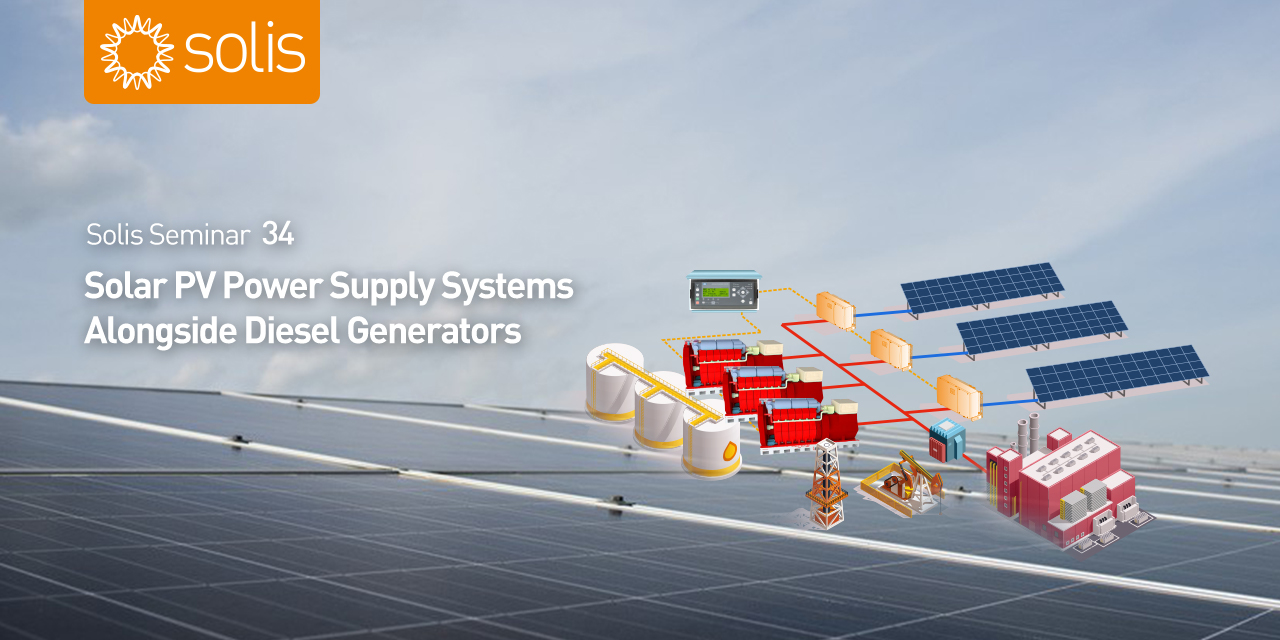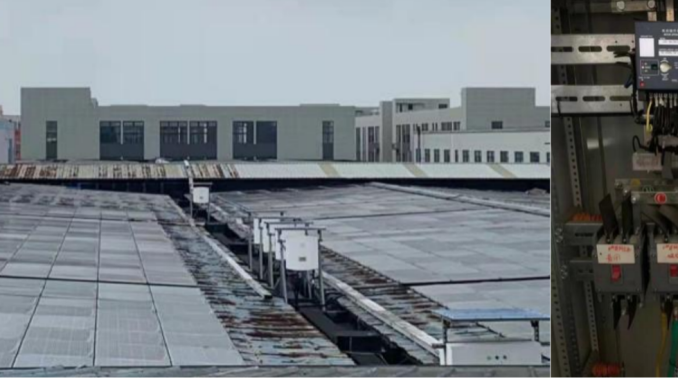
Background
In some areas of the world, the power grid can fail or shut down due to unstable supply or planned shutdowns via programs such as “load shedding” and can last an unknown amount of time. During this time, a standard grid connected solar PV system will also shut down. How can we ensure that a solar PV system continues to work during these temporary, but often lengthy, power outages?
This Solis seminar brings you solar PV + diesel generator complementary systems. We will be looking at actual installations and how they operate.

Figure 1: Solar PV + diesel generator complementary system
Solution 1:Power Supply Systems with Low Capacity, Stable Loads and no sudden high demand periods.
The operation of the generator can be managed through the inverter’s own settings and intelligent adaptability.

Figure 2: PV+ diesel compensation system solution without controller
The system topology is shown in Figure 2. The inverter manages the virtual grid which is composed of a diesel generator system through its self-adaptation and adjustment capabilities. The solution is simple and stable, and requires no additional equipment or costs.
The settings and adjustments of the inverter are as follows:
- Change the inverter grid-connected standard to that which matches the generator (the original grid-connected standard needs to be temporarily changed to the grid-connected standard that matches the generator)
- The frequency adaptation range of the inverter needs to be reduced to 47~52Hz
- Turn on the inverter “Freq Derate” function
- Turn on the inverter “Volt-Watt” function
Example System 1
To promote green energy production and gradually realize the mission of “carbon peak and carbon neutrality”, China implemented strict electricity curtailment measures in 2021, and many high-energy-consuming factories have been affected.
This example here is an electrical appliance manufacturer located in Ningbo, Zhejiang Province. The company has a 1MW solar PV power station, using 17 x Solis 60kW 4G grid-connected inverters, and connected to the grid at four grid-connection points.
Affected by energy curtailment, part of the plant was powered off, and the grid-connected PV system shut down. This affected the power supply needs of the assembly line workshop by about 270kW. Working with the company, Solis engineers use 3 x 60kW inverters to directly fit a 350kW diesel generator system to work independently on site. The output power of this PV + generator system is 150kW, and the maximum PV utilization rate of the load reaches 50%, achieving the goal of saving fuel expenses.

Figure 3: On-site PV + diesel generator set complementary power supply scheme

Figure 4: The onsite location of the diesel generator set
Summary
This scheme can reduce the cost of electricity per kilowatt-hour in the form of PV + generators through the adaptive adjustment capability of the inverter. However, there are also scenarios where the PV capacity ratio should not be too large, and the load must be constant. This solution is not suitable for large load fluctuations. The PV capacity ratio needs to be less than 40% of the total power supply to ensure system stability.
Solution 2: Power Supply Systems with Large Sudden Loads
These usually have a demand for a higher proportion of on-site PV capacity (more than 70%) and you need to introduce system control and communication equipment to adjust the balance between the solar PV, generator and load.

Figure 5: PV+ diesel compensation system solution with controller
This solution uses DEIF’s AGC controller and Solis inverters for coordinated control. It supports up to sixteen 380V low-voltage grid-connected solar inverters as well as 1 or 2 diesel generators. It can support multiple working modes such as grid-connected and off-grid/grid-on-grid combinations. For that reason, it has greater scalability and flexibility, and is a strong choice of system for many remote areas, island areas and regions where there is little or no stable grid.
Example System 2
Located in Brazil, this example uses DEIF’s AGC_150 hybrid controller to integrate and control a 500kW solar PV system. The solar system utilizes Solis 25kW low voltage inverters, and then merges into a virtual grid composed of a 500kW diesel generator system to supply power for the factory’s 430kW load.
With sufficient sunlight, the solar PV can provide up to 360kW of power, accounting for more than 70%.

Summary
This solution can effectively coordinate and manage the output of the inverters and generators in the system to meet load power consumption by the introduction of additional controllers. It is also able to maximize the energy produced by the PV system to reduce the consumption of fuel-fired energy. As a result, the system is more stable and can adapt to the application scenario of heavy loads with sudden changes. The solar PV capacity can provide 70% to 80% of the total power supply, and a MW-level power supply system can be realized.
